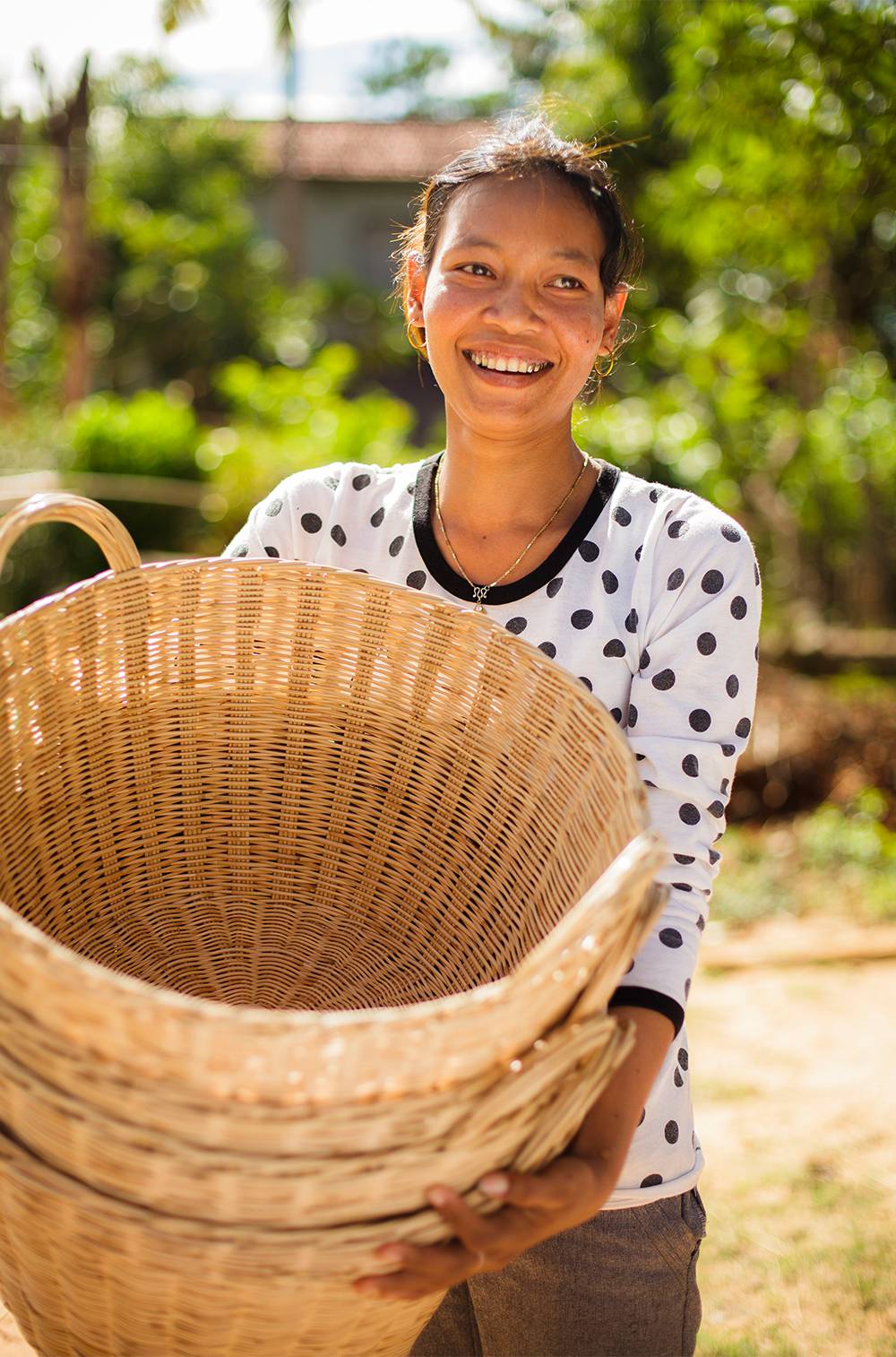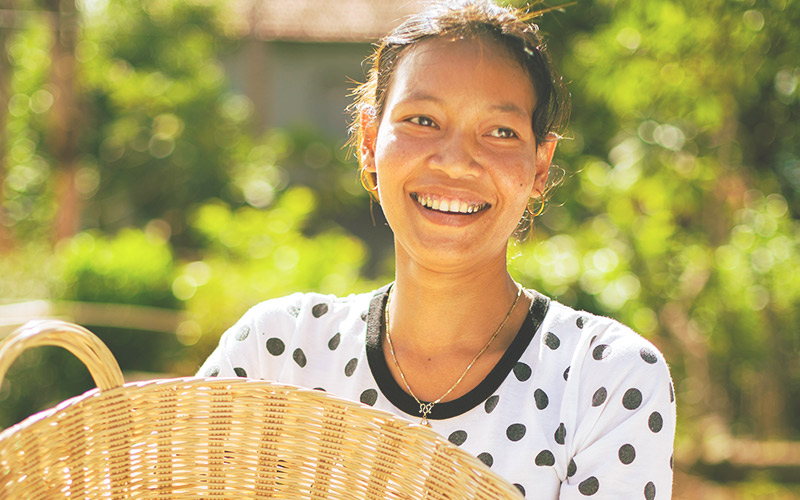Fintrac
Support to Grow Bamboo and Rattan Protects Forests
Cambodia

This woman participates in a non-timber forest product group in Krang Thom that is specifically geared toward encouraging women to create marketable products from bamboo.
Photo Credit: Fintrac Inc.
Since 2011, Cambodia HARVEST has promoted non-timber forest products as part of a multi-pronged approach to increase household incomes and incentivize communities to better manage and protect forest resources.
In rural Cambodia, bamboo and rattan are two of the most versatile raw materials. Villagers use them for a range of tasks: building and repairing their homes, making household objects like furniture, fencing, and fish cages, and supplementing their diets with the plant’s nutritious shoots. However, these two raw materials are scarce in many communities and villagers are forced to buy it at the local market or substitute timber products collected from nearby forests, endangering those areas.
The Cambodia HARVEST non-timber forest product component addresses two of the pillars of climate-smart agriculture: improvements in productivity and building resilience.
Cambodia HARVEST has increased the productivity of farmers producing bamboo and rattan by helping them implement improved nursery technologies, seedling propagation, large-scale commercial plantings, and community forest plantings in degraded areas. As a result, communities have more non-timber forest resources available to use on a sustainable basis, thus decreasing reliance on threatened tree species and increasing the resilience of community forests.
“This training was invaluable,” comments Suong Sokan, Chief of Khnar Pou Community Forest in Siem Reap province. “We’ve wanted to plant bamboo for a long time, but we just didn’t know how.”
The non-timber forest product component benefited 2,600 households in 30 communities, and Cambodia HARVEST has provided technical assistance to 69 non-timber forest product producer groups, which have evolved into small and medium-sized enterprises composed mostly of women. The groups increased their revenues by 430% and increased their profits by 535% over baseline.




